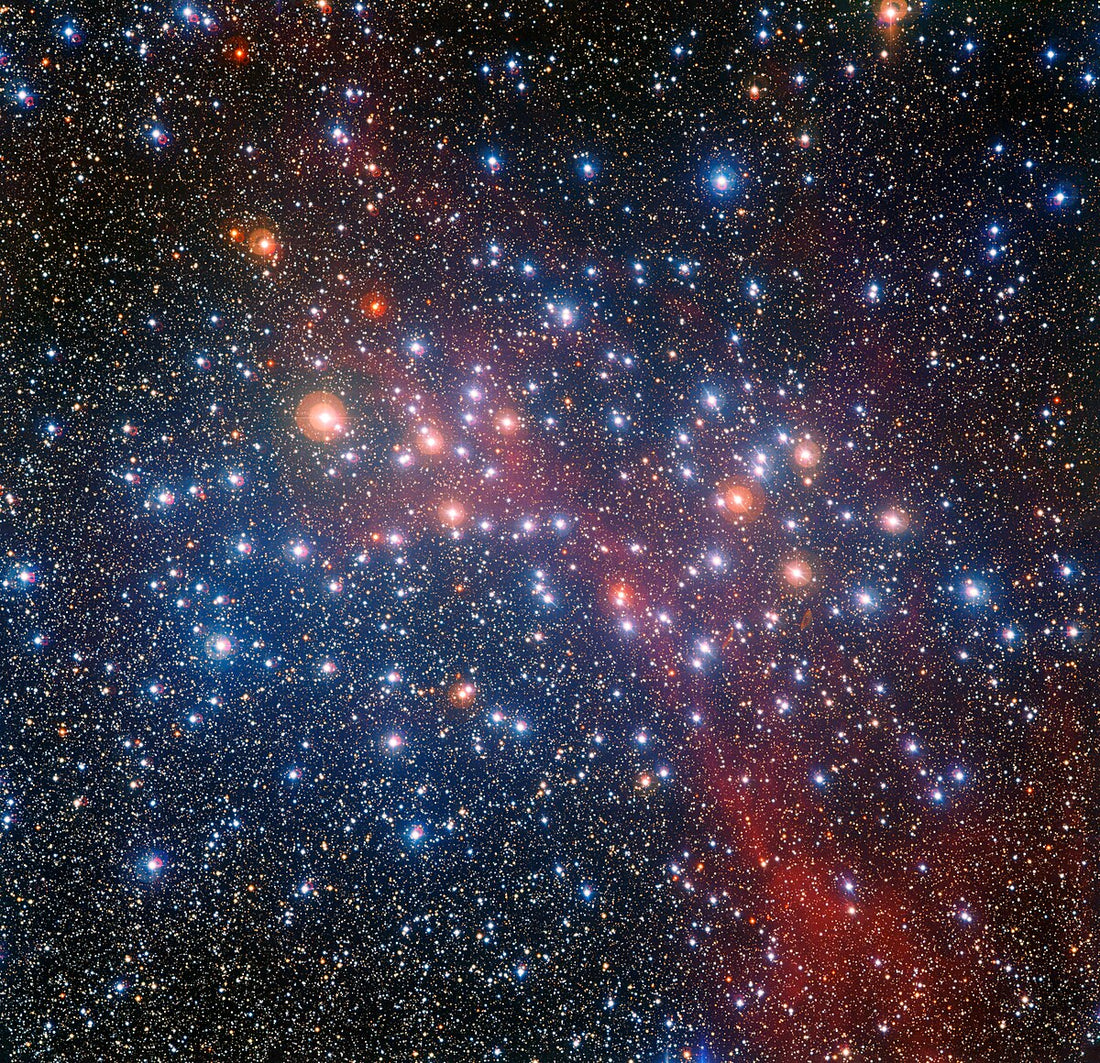
Astronz Object of the Week: NGC 3532 — The Wishing Well Cluster
NGC 3532 is an open star cluster in the constellation Carina. It lies about 1,300 light years away and is one of the brightest and richest open clusters visible in the southern sky. Discovered by Nicolas-Louis de Lacaille in 1752 during his observations from the Cape of Good Hope, it is sometimes known as the Wishing Well Cluster due to its dense, glittering appearance through a telescope.
The cluster contains several hundred stars, with a mix of hot blue-white stars and cooler orange and red stars. Its estimated age is around 300 million years, making it an intermediate-age cluster. Many of its stars are still on the main sequence, but a number have begun to evolve into giants, giving astronomers insight into stellar evolution within moderately aged clusters.
NGC 3532 spans roughly one degree of sky—about twice the width of the full Moon—and covers a region over 20 light years across. It is easily visible to the naked eye from dark-sky locations in the Southern Hemisphere and appears as a rich, hazy patch. Through binoculars or a telescope, individual stars resolve cleanly, revealing the cluster’s complex structure and depth.
Because of its position in the southern sky and its low declination, NGC 3532 is best viewed from southern latitudes between February and May, when the constellation Carina is prominent. It sits not far from the famous Eta Carinae Nebula, making it a useful waypoint for navigation during deep sky observing sessions.
This cluster has been studied photometrically and spectroscopically, contributing to our understanding of stellar dynamics and chemical composition within open clusters. Its relatively close distance and low foreground extinction also make it an ideal target for amateur astrophotographers and observational studies.
